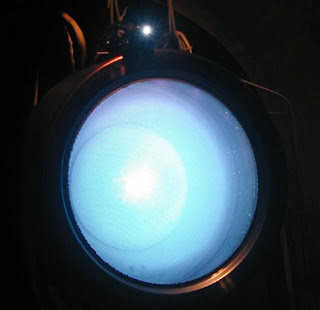 On October 24th 1998 NASA launched Deep Space 1, a mission meant to test a slew of new technologies one of which was ion propulsion (http://www.jpl.nasa.gov/missions/details.php?id=5870). The mission was a huge success and was the first time ion propulsion got its chance to shine and show the world what it has to offer. But to understand we need to examine what exactly ion propulsion is; NASA has a website (http://www.nasa.gov/centers/glenn/about/fs21grc.html) with a great amount of detailed information on ion propulsion. I’m no rocket scientist so I’ll do my best to explain how an ion propulsion system works to the best of my knowledge. The article Tega Jessa wrote for UniversityToday (http://www.universetoday.com/77085/ion-propulsion/) helped me understand it a little bit more by explaining that every engine works on Issac Newtons third law “for every action there is an equal and opposite reaction”. Engines burn fuel that then turns into gas and air pushing outwards that gives the thrust needed to propel forward. With that in mind an ion engine basically does the exact same thing only instead of burning the fuel to create thrust they use electricity on ionized fuel to create opposition and thrust, doing this allows the fuel to last much longer and is much more cost effective.
On October 24th 1998 NASA launched Deep Space 1, a mission meant to test a slew of new technologies one of which was ion propulsion (http://www.jpl.nasa.gov/missions/details.php?id=5870). The mission was a huge success and was the first time ion propulsion got its chance to shine and show the world what it has to offer. But to understand we need to examine what exactly ion propulsion is; NASA has a website (http://www.nasa.gov/centers/glenn/about/fs21grc.html) with a great amount of detailed information on ion propulsion. I’m no rocket scientist so I’ll do my best to explain how an ion propulsion system works to the best of my knowledge. The article Tega Jessa wrote for UniversityToday (http://www.universetoday.com/77085/ion-propulsion/) helped me understand it a little bit more by explaining that every engine works on Issac Newtons third law “for every action there is an equal and opposite reaction”. Engines burn fuel that then turns into gas and air pushing outwards that gives the thrust needed to propel forward. With that in mind an ion engine basically does the exact same thing only instead of burning the fuel to create thrust they use electricity on ionized fuel to create opposition and thrust, doing this allows the fuel to last much longer and is much more cost effective. There are no gas stations in space (yet anyways) which means the limits of our technology are the limits of our space exploration. Ion propulsion has proven itself to be a useful and cost effective method of space travel already and is in the final testing stages. In the next decade I believe we will see ion propulsion become the main propulsion system for space travel allowing us to get further faster and more effectively. By the time NASA fully adopts ion propulsion for space travel I believe that commercial travel will begin testing these engines on jets and other aircrafts, this will be a key point in our history because I believe that at this point we will begin to consider commercializing space travel. In my visions of the future I see our commercial airline tickets costing one third of the current cost and travel time being cut down by another third of what it is currently; people will be in the airport with their luggage packed to spend a week on the newest resort on the moon. My entire vision hangs is dependent on the success of a faster and more efficient fuel for space travel.
NASA, Jet Propulsion Labs (12/13/2012) http://www.jpl.nasa.gov/missions/details.php?id=5870
Jessa, Tega, UniversityToday (10/31/2010) http://www.universetoday.com/77085/ion-propulsion/
NASA, Fact Sheet (12/13/2012) http://www.nasa.gov/centers/glenn/about/fs21grc.html

No comments:
Post a Comment